Your grocery cart might be hiding some serious health saboteurs! Processed foods have invaded our kitchens, bringing loads of sugar, salt, and mystery ingredients along for the ride. While convenience is tempting, these factory-made munchies can wreak havoc on your body over time.
Let’s unmask the worst offenders lurking in those colorful packages – the processed food villains you might want to think twice about before tossing into your shopping cart.
1. Sugary Breakfast Cereals
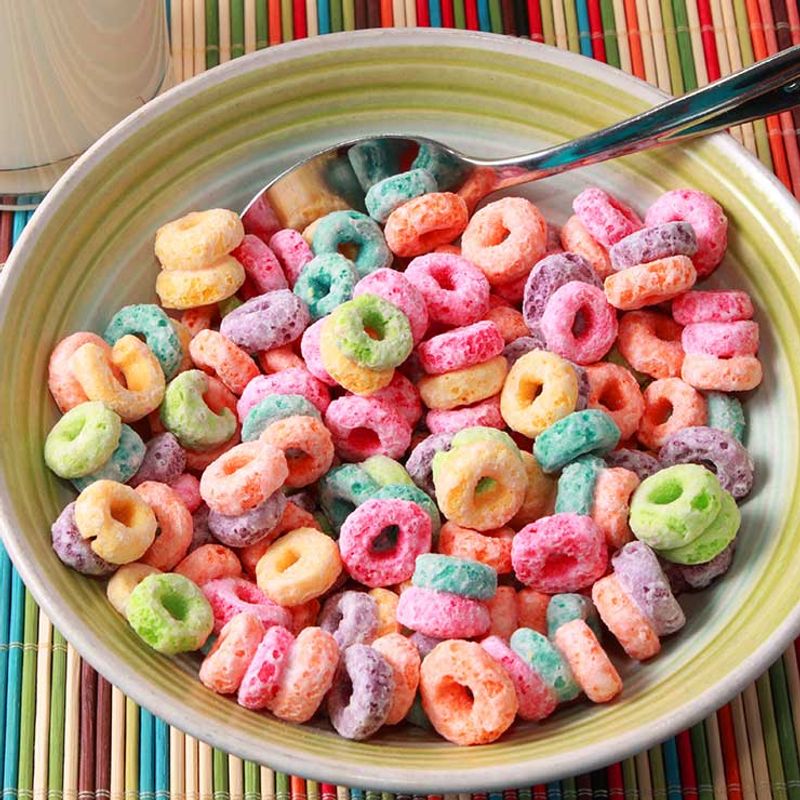
Cartoon characters and rainbow colors mask what these morning bombs really are: dessert disguised as breakfast! Most popular cereals pack more sugar than a candy bar, with some containing up to 12 teaspoons per serving. That’s practically a bowl of sugar with some food coloring thrown in.
The artificial dyes? Linked to hyperactivity in kids. The processing strips away fiber and nutrients, leaving you with a blood sugar rollercoaster that crashes before lunch. Parents think they’re serving something wholesome, but the reality is closer to birthday cake – minus the honesty about being a treat.
2. Microwave Popcorn

Behind that innocent-looking bag lurks a chemical nightmare. The buttery flavor? Created by diacetyl, a compound linked to serious lung problems in factory workers. The bag itself contains PFAS chemicals that migrate into your snack and then hang around in your body for years.
Remember that distinctive smell when the bag opens? Those are volatile compounds releasing into your kitchen air. Even worse, manufacturers hide behind vague “natural flavors” labels while pumping in salt and oils you’d never use at home.
3. Processed Meat Sticks
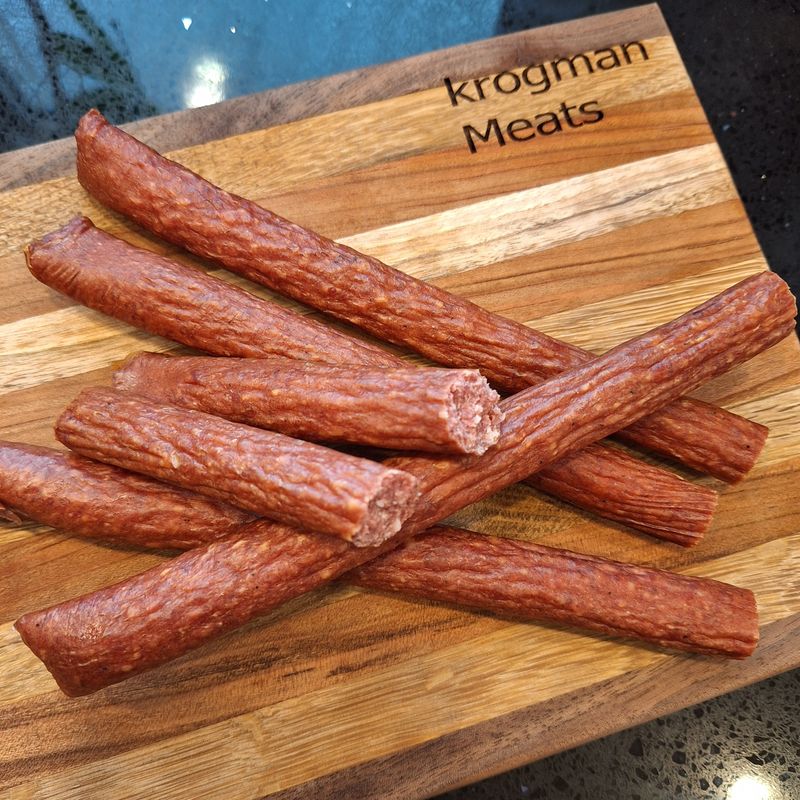
Gas station protein bombs! Those suspiciously red meat tubes survive nuclear apocalypse conditions without refrigeration – not because of good engineering, but terrifying preservatives. Sodium nitrite gives them that appetizing pink glow while potentially forming cancer-causing compounds in your body.
One stick delivers a sodium punch that makes your blood pressure cry uncle. The mystery meat inside comes from parts of animals you’d probably rather not visualize while snacking.
4. Diet Soda
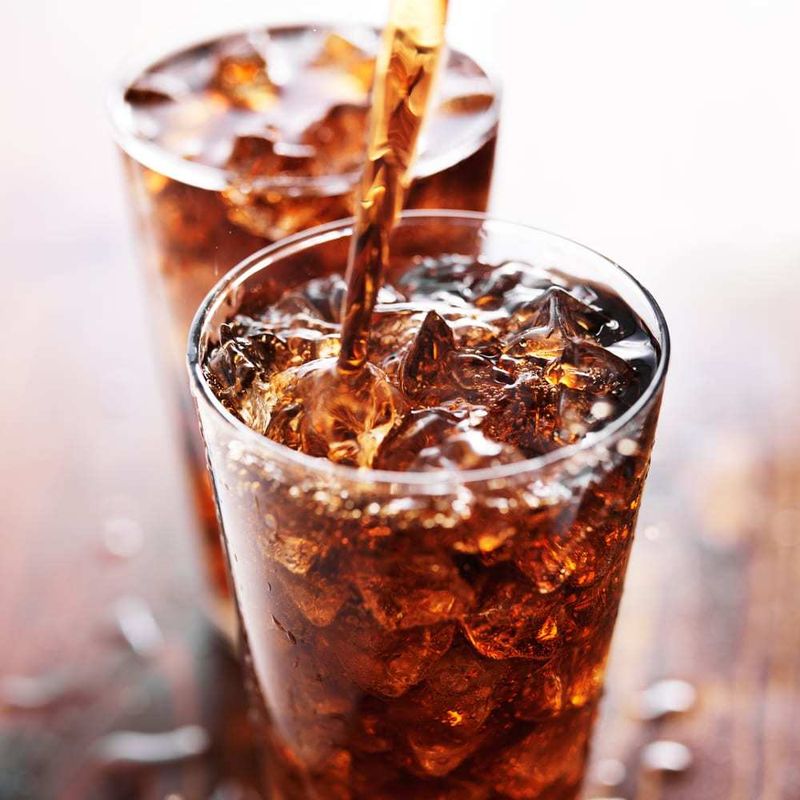
Zero calories! Infinite problems! This chemical cocktail tricks your taste buds with artificial sweeteners that can be hundreds of times sweeter than sugar. Your brain gets confused – it tastes sweetness but receives no calories, triggering increased hunger and cravings later.
Studies link these drinks to weight gain (ironic for something labeled “diet”), metabolic syndrome, and altered gut bacteria. The caramel coloring contains 4-methylimidazole, a potential carcinogen. That fizzy sensation? Phosphoric acid, which leaches calcium from your bones over time.
5. Margarine

Butter’s evil twin once marketed as heart-healthy contains vegetable oils tortured in labs until they become spreadable. The transformation process created trans fats – the Frankenstein monster of fats that increase bad cholesterol while decreasing good cholesterol.
Yellow dye gives margarine its butter-like appearance – without it, this spread looks like sad, white shortening. Some brands add palm oil, driving deforestation while claiming health benefits.
6. Frozen TV Dinners
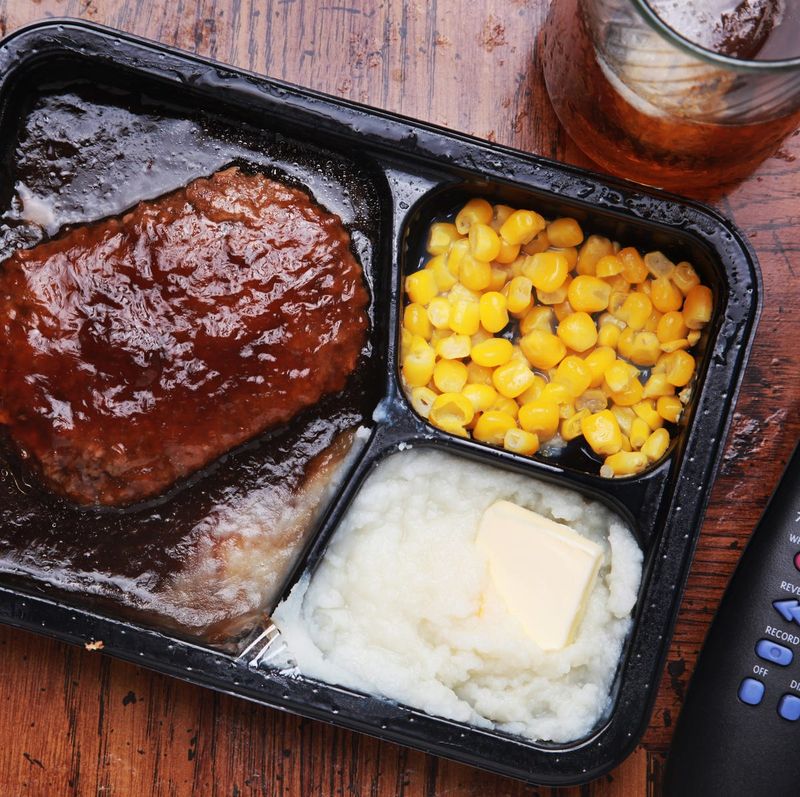
Nostalgia in a plastic tray! These compartmentalized convenience meals hide a shocking amount of sodium – sometimes exceeding 1,000mg in a single serving. That’s almost half your daily limit in one sad, rectangular meal.
The meat? Often mechanically separated and filled with fillers. Those perfectly shaped vegetables? Flash-frozen after being picked unripe, then doused with preservatives. The dessert compartment contains more artificial ingredients than a chemistry set.
7. Flavored Non-Dairy Coffee Creamers
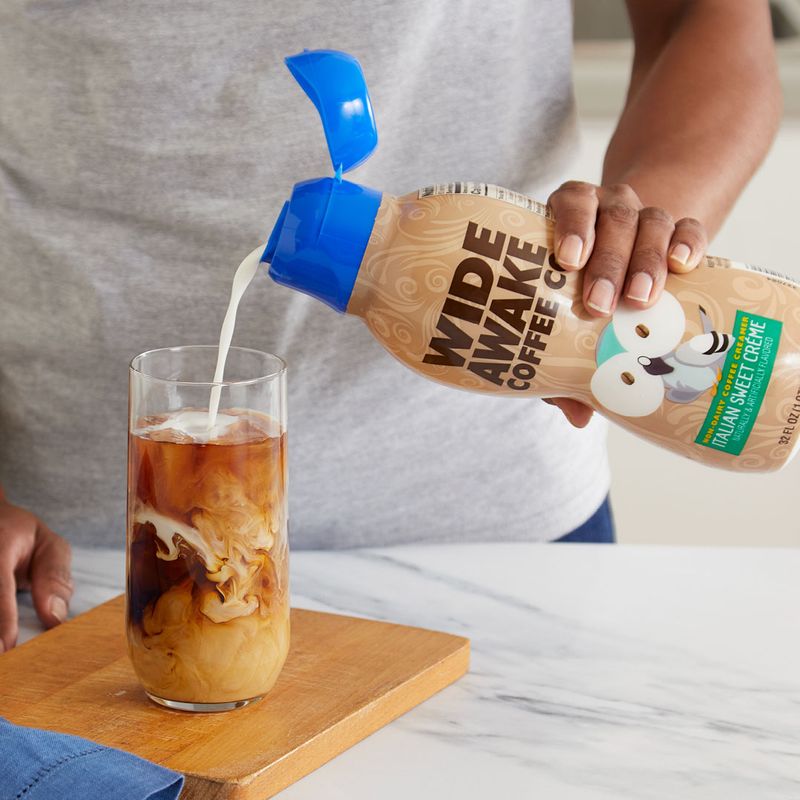
Mystery white liquid that somehow never spoils! These coffee corruptions contain no actual cream – just water, sugar, and partially hydrogenated vegetable oils. The “creamy” texture comes from thickeners and emulsifiers like carrageenan, linked to digestive inflammation.
Those delicious flavors like “Vanilla Caramel Dream”? Entirely lab-created chemicals with zero vanilla or caramel in sight. Some brands pack 5 grams of sugar in a single tablespoon – turning your morning coffee into dessert soup.
8. Store-Bought Frosting

Birthday cake’s toxic hat! This tub of spreadable chemicals masquerading as a treat contains more partially hydrogenated oils than you can pronounce. The first ingredient? High fructose corn syrup – because regular sugar apparently wasn’t sweet enough for the food scientists.
Those vibrant colors come from petroleum-based dyes linked to hyperactivity and allergies. The smooth texture? Achieved through propylene glycol – a cousin to antifreeze. One serving delivers nearly a day’s worth of added sugar in just two spoonfuls.
9. Instant Ramen Noodles
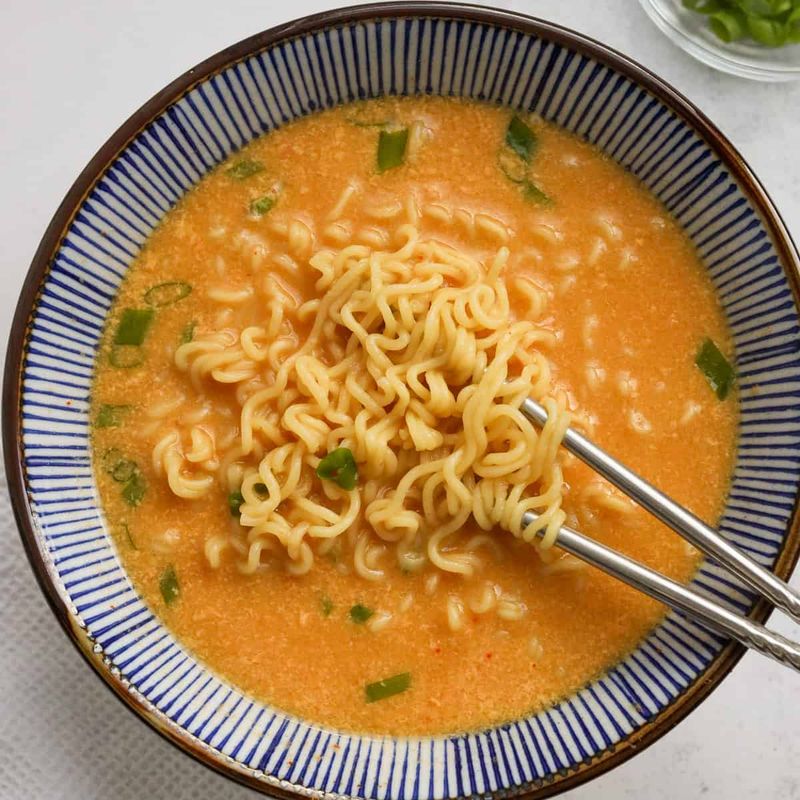
College survival food with consequences! These curly noodles are deep-fried before packaging – yes, fried – then loaded with enough sodium to make your blood pressure skyrocket. One package contains up to 1,820mg of sodium, over 80% of your daily recommended intake.
The flavor packet? A chemistry experiment of MSG, artificial flavors, and enough preservatives to survive a nuclear winter. Those noodles maintain their shape through TBHQ, a petroleum-derived preservative that prevents the oils from going rancid on shelves.
10. Fruit Snacks
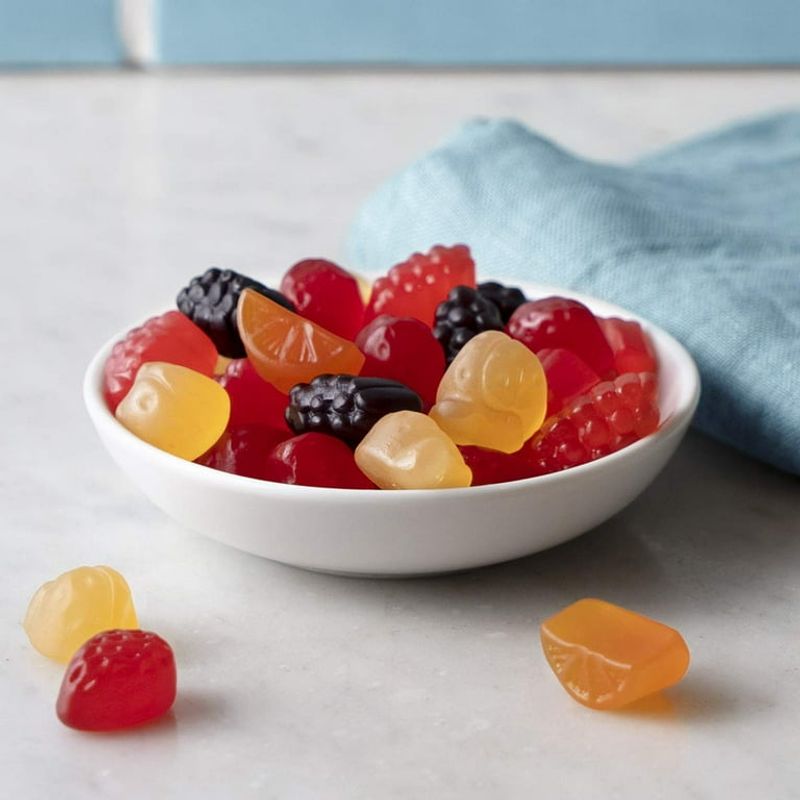
Candy wearing a fruit costume! Marketing geniuses convinced parents these gummy treats have something to do with actual fruit. Spoiler alert: most contain less than 2% fruit juice while packing more sugar than Halloween candy.
The chewy texture? Created by gelatin or pectin mixed with corn syrup and sugar. Those vibrant colors come from artificial dyes linked to behavioral problems in children. Some brands even have the audacity to claim “made with real fruit” when the only fruit involved is a drop of concentrate.
11. Bottled Salad Dressing
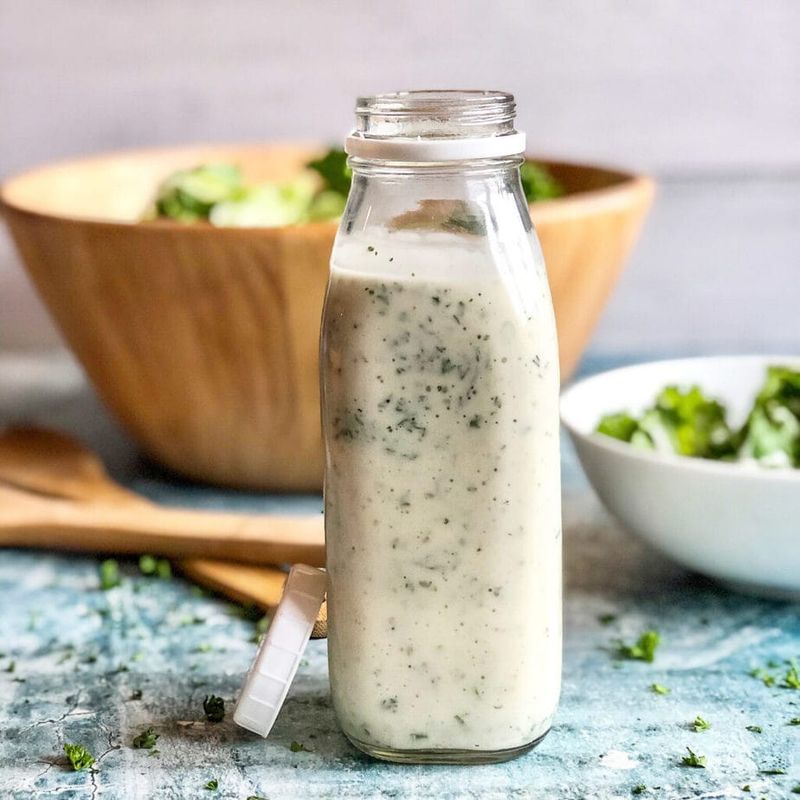
Garden sabotage in a bottle! Your healthy salad gets ambushed by these emulsified concoctions filled with soybean oil, high fructose corn syrup, and more preservatives than actual herbs.
Many ranch dressings contain titanium dioxide – the same chemical used in paint and sunscreen – to achieve that appealing white color. The “creamy” texture comes from xanthan gum and modified food starch, while natural flavors hide dozens of lab-created compounds.
12. Processed Cheese Slices
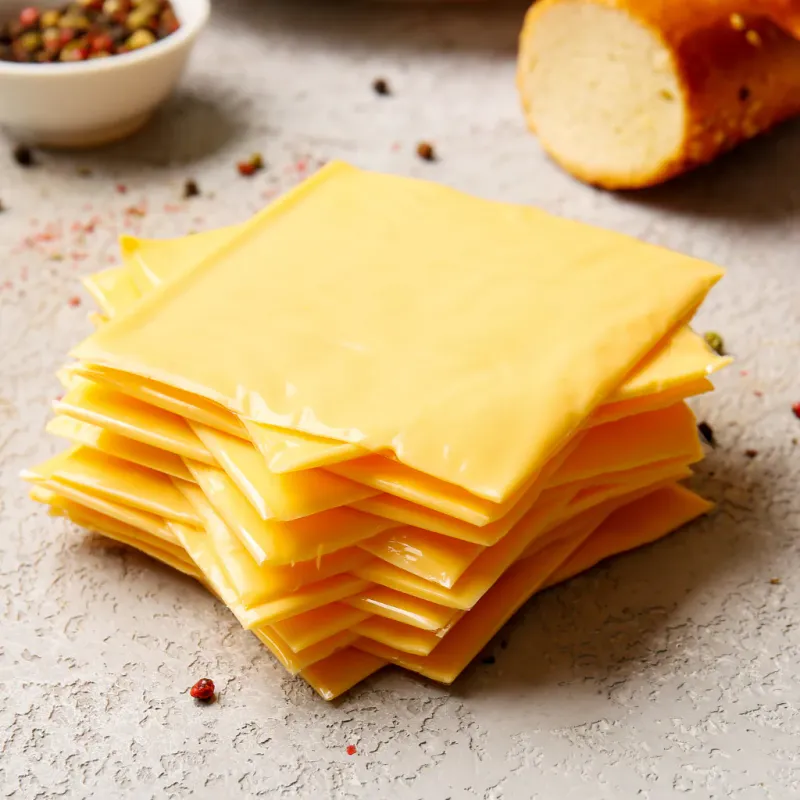
Plastic-wrapped non-cheese that refuses to expire! These neon orange squares contain more additives than actual cheese – as little as 51% cheese is legally required. The rest? Emulsifying salts, whey, preservatives, and artificial colors that help achieve that unnaturally smooth texture and extended shelf life.
Real cheese molds because it’s alive with beneficial cultures. These slices could survive archaeological digs intact. The individually wrapped versions add insult to injury with single-use plastics touching your food.
13. Fast Food Chicken Nuggets
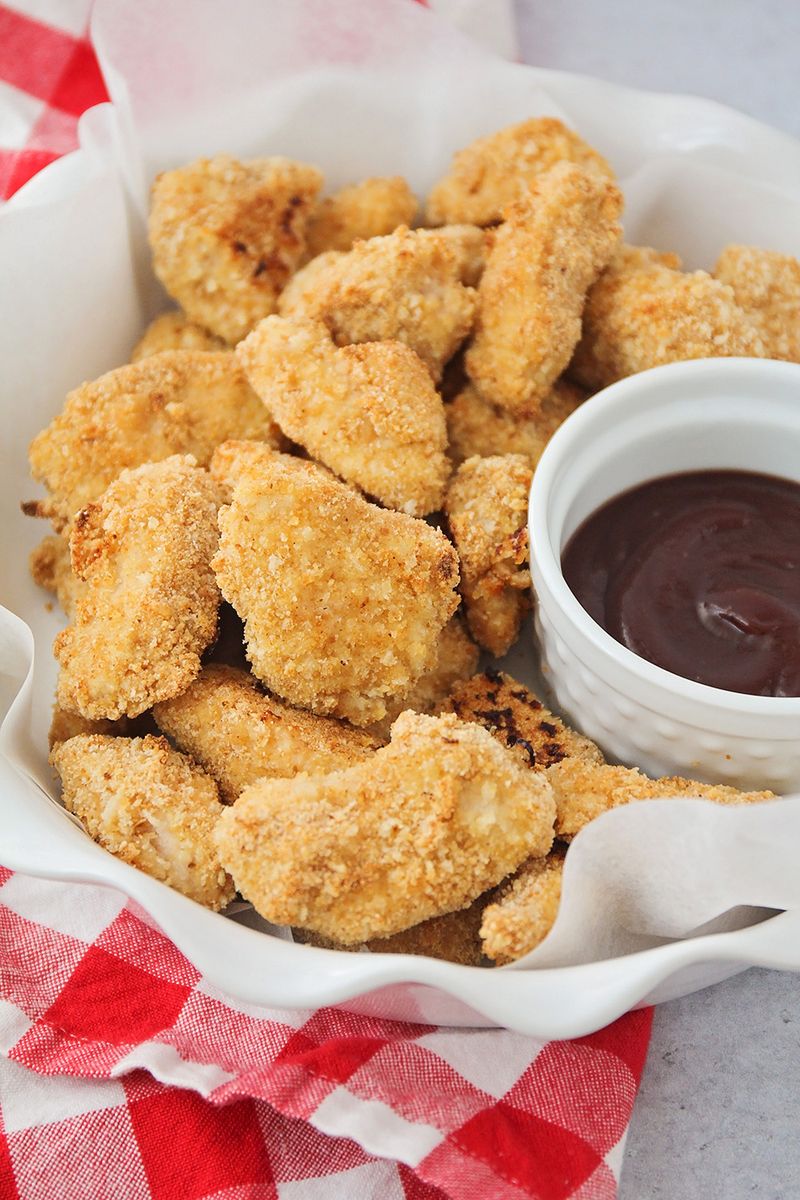
Mystery meat sculptures! These breaded lumps contain bits of chicken combined with dozens of fillers and stabilizers. The chicken itself? Often mechanically separated and washed in ammonia to kill bacteria – appetizing, right?
The crispy coating contains more ingredients than a homemade chicken dinner, including dextrose, modified food starch, and autolyzed yeast extract (MSG’s sneaky cousin). One popular chain’s nuggets feature dimethylpolysiloxane – an anti-foaming agent also used in Silly Putty.
14. Packaged Cookies

Sugar bombs with infinite shelf life! These crunchy temptations stay “fresh” for months thanks to preservatives like TBHQ and BHT – petroleum-derived compounds that prevent oils from going rancid. Real cookies go stale because they’re real food.
Most varieties use partially hydrogenated oils despite health warnings. The chocolate chips? Often “chocolate flavored” because they contain so little actual cocoa. That perfect round shape and crack pattern? Engineered in labs for maximum visual appeal, not flavor.
15. Boxed Macaroni And Cheese
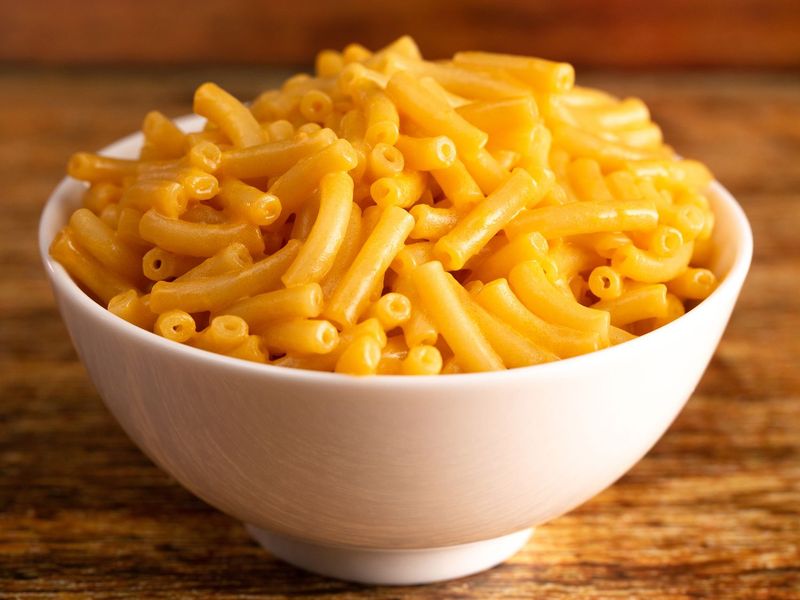
Neon orange comfort food with a chemical twist! That unnaturally vibrant cheese powder contains more than just cheese – it’s loaded with Yellow 5 and Yellow 6 dyes linked to hyperactivity in children. The “cheese flavor” comes from a mix of whey, salt, and mysterious “cheese cultures.”
The pasta itself? Often enriched with synthetic vitamins to replace nutrients stripped during processing. Some brands pack over 800mg of sodium per serving – more than a large order of fast food fries!
16. Canned Soup

Sodium swimming pools with floating vegetables! These convenient comfort foods hide a shocking amount of salt – up to 950mg per cup in some varieties. That’s more than half your daily recommended intake in one bowl.
The vegetables? Often mushy shadows of their former selves, having lost most nutrients during the high-heat canning process. The broth contains yeast extracts (hidden MSG) and caramel coloring for that appetizing brown hue.
17. Artificial Sweeteners

Sweet little lies in a packet! These zero-calorie sugar substitutes trick your taste buds while potentially wreaking havoc elsewhere. Aspartame breaks down into formaldehyde (yes, embalming fluid) when metabolized. Sucralose is chlorinated sugar – literally sugar treated with chlorine.
Studies link these chemicals to altered gut bacteria, increased cravings, and metabolic changes. The innocent-looking packets contain bulking agents like dextrose or maltodextrin – which are actually sugars!
18. Protein Bars
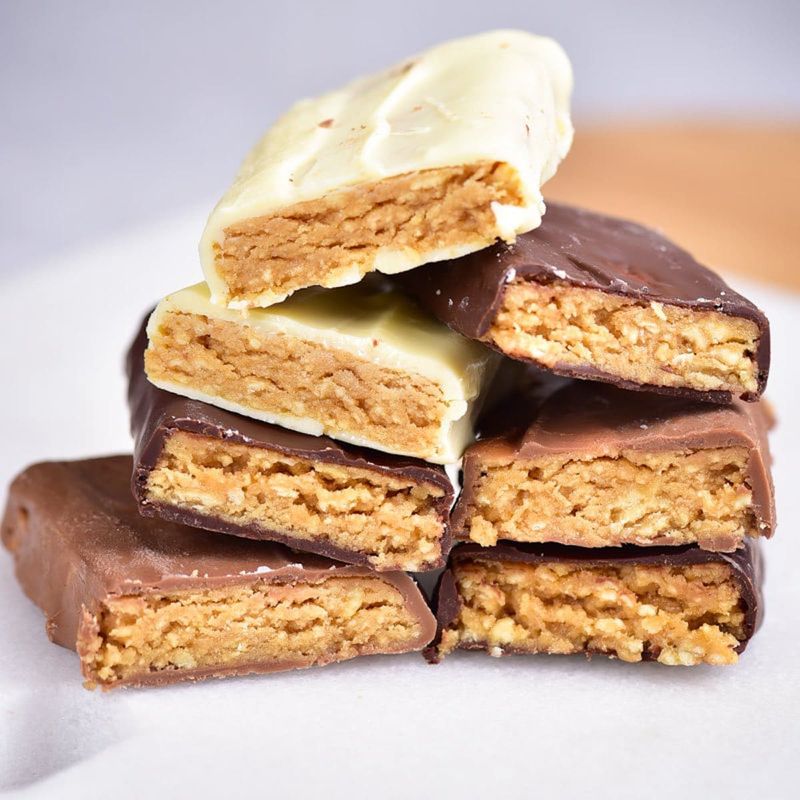
Candy bars in disguise! These so-called health foods often pack more sugar than a Snickers while hiding behind fitness-focused marketing. The protein? Often cheap soy isolate or whey concentrate padded with fillers to reach that impressive number on the front label.
Many varieties use sugar alcohols like maltitol that cause digestive distress (gym bathroom emergencies, anyone?). The chocolate coating contains palm oil – environmentally devastating and nutritionally questionable.

